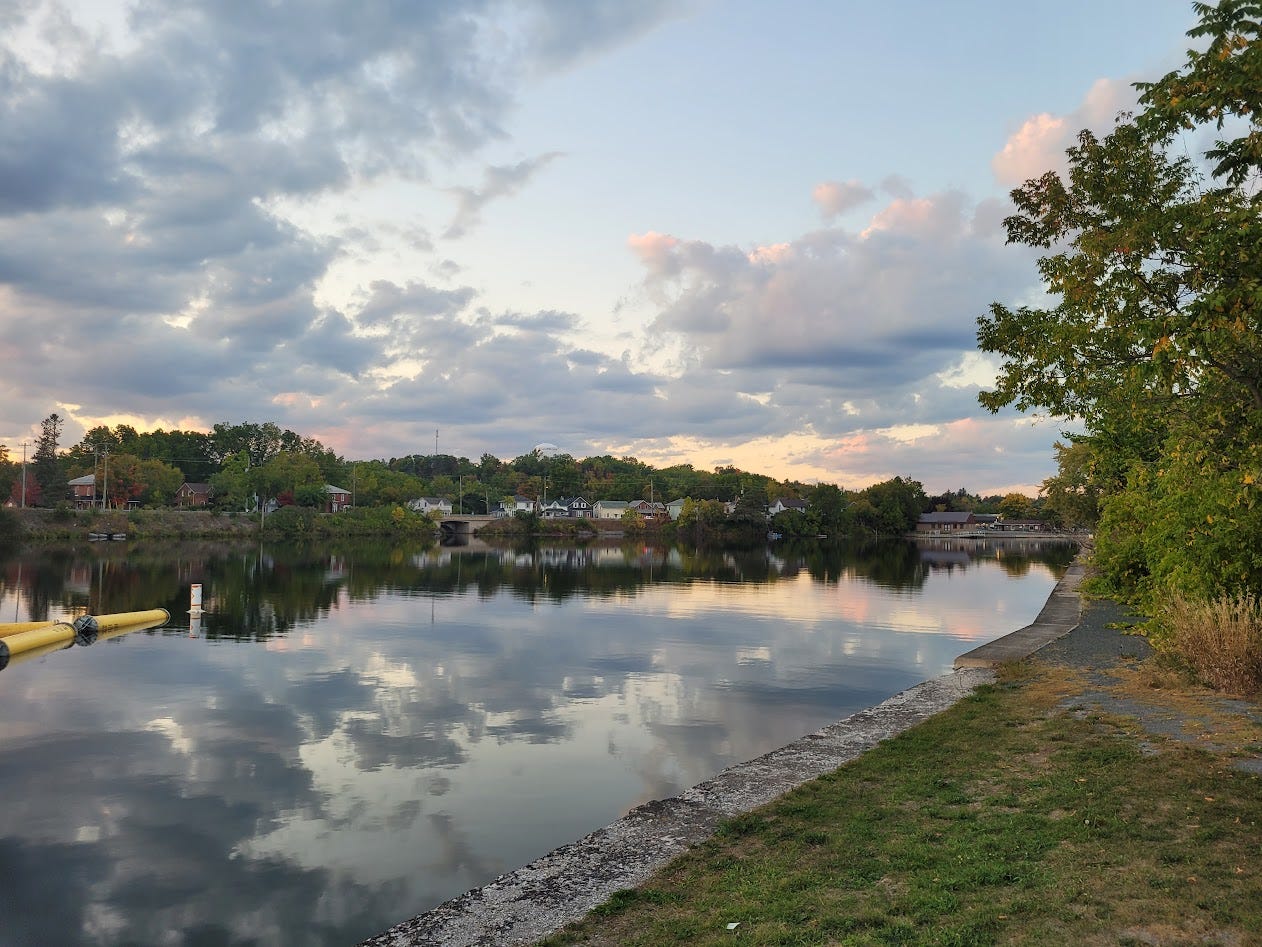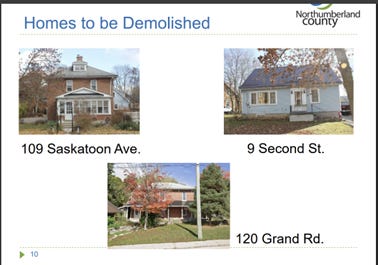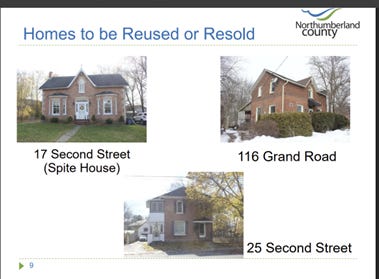$56 million shock
County councillors hit by sticker shock and need to borrow for Campbellford bridge
The latest and perhaps biggest hurdle for a 35-year effort to build a new Campbellford bridge over the Trent River may be sticker shock at its rising cost.
Several councillors expressed that shock on Wednesday when Northumberland County Council received an update that reported the current estimated
cost of the new 188-metre (616 foot) bridge is $56 million.
At this point, the county would have to raise $40 million of that by borrowing and the annual carrying costs of up to $2.8 million for 25 years could push the county over its self-imposed debt limit, warned Director of Finance Matthew Nitsch.
The county plans to largely pay for the bridge with development fees, but they haven’t generated enough money yet, so it can only count on about$15 million.
Port Hope Mayor Olena Hankivsky and Cobourg Mayor Lucas Cleveland both announced surprise and dismay at the prospect of their residents paying so much for a bridge at the northern end of the county.
Hankivsky said she was suffering PTSD from the need for the county to spend $145 million constructing the new Golden Plough Lodge, up $30 million from original estimates. “I’m having sticker shock, that’s my initial response,” she said after hearing the bridge estimate.
She said taking on more debt to build a bridge would leave little flexibility for other needed projects across the county in coming years.
Cleveland, who was just elected two years ago, shook his head and said he has been trying to learn the history of the bridge-building effort. He has been pushing staff and councillors to clamp down on spending in the 2026 budget and noted that his municipality has been delaying capital spending projects.
“When I hear that we have a $40 million gap between what we have saved and what we have to spend that raises even more concerns,” Cleveland said. “I am not comfortable with moving forward with any capital projects at this point.”
Chief Administrative Officer Jennifer Moore said that within a couple months council would need to make a go, or no-go decision on whether to tender work on the bridge.
During a discussion at the public works committee meeting on September 4, Warden Brian Ostrander said he was disappointed by the response received from the province recently when asked about money for the bridge.
“Lukewarm at best is I think being Pollyannish,” Ostrander said. “Without federal and provincial support, I am extremely concerned about how we are going to pay for this. The ability to repay a debt of this significance is problematic.”
At that committee meeting, Moore pointed out that in most cases once a project is started it is no longer eligible to apply for provincial or federal funding, so the county will have to decide soon whether to proceed. But in order to obtain funding the project has to be ready to go, so the county has had to acquire properties and do all the work it has done so far.
A slide in a presentation by county Director of Public Works Denise Marshall said the planning for a bridge started back in 1989.
On Thursday, I sat down with Marshall and Trent Hills Planning Director Jim Peters to discuss the updated bridge plan. Marshall will make a presentation to town council next Tuesday. You can see it as part of the agenda for the meeting or here. Or attend the meeting in person at 9:30 a.m., or watch it online.
The previous design made public in 2023 was 60 per cent complete, and the current one is 90 per cent ready, Marshall said. Some fairly minor changes have been made to the design, including eliminating stairs from the bridge to Saskatoon Avenue. What remains to be done is detailed work to ensure all questions have been answered and everything has been updated and reviewed.
The county hopes to have a final design ready next spring, but that timeline is dependent on getting approvals from Parks Canada, Marshall said. “We’re pushing them and we're telling them what our timelines are. So, we continue to follow up and try to get information as quickly as we can, but obviously we don't have control over when they can provide those approvals.”
Once a final design is approved it will take time to prepare for a bidding process and probably months for contractors to respond with bids that will set the actual price. Construction will take three years, she said, and her presentation shows it wrapping up in 2028, but that seems optimistic since work won’t be starting until at least mid-2026.
The county applied for $26 million in provincial funding but been rejected. At a recent Association of Municipalities of Ontario meeting it was told another round of funding may be announced this fall and it should reapply, Marshall said. But that was the meeting at which Ostrander said the province didn’t seem willing to contribute. The county is now asking the province to pay one-third of the cost -- $19 million.
It has also applied for $11.4 million from a federal program that supports active transportation. This project may qualify because the new bridge will include bike lanes, but a decision on the grant has been slow in coming.
It would be ironic if the fate of the bridge depends on bike lanes, given Premier Doug Ford’s constant and expensive opposition to any two-wheeled activities. I’d suggest any application for provincial money should ignore the bike lanes and perhaps recommend a tunnel.
The county has about $15.5 million set aside for the bridge, or available from development charges over the next three years, a report says. That means it will need to borrow $40.5 million, which could be financed partly by development fees in coming years.
“The Trent River Crossing and Surrounding Road Network project is a transformational infrastructure project that will enhance connectivity, support economic growth, and improve quality of life for residents across Northumberland County,” a report says.
You can learn more about the bridge project on the county’s website here.
Marshall’s report says the county has acquired five complete properties and has reached agreements with five of the 16 landowners who will be required to give up slices of their property, mostly to make way for road improvements. Council has approved expropriation if no settlements can be negotiated.
“The total cost for land acquisition is approximately $4.2 million and includes the purchase price, land transfer taxes, legal fees, injurious affection, property surveys, appraisals costs and negotiator fees,” a report says.
“We've been looking to purchase properties in a fair manner and to compensate owners fairly,” Marshall told me on Thursday. She said the county would prefer to avoid expropriation, but it might be necessary in order to keep the work on track.
Her report shows that the Spite House at 17 Second Street, the adjacent home at 25 Second Street, and 116 Grand Road, which have been purchased by the county, will either be reused or resold once construction is completed.
“We don't need to move them or demolish them at this point,” she said.
As I have reported, the homes at 109 Saskatoon Ave., 9 Second St. and 120 Grand Rd. will all be demolished. Approval to demolish the Saskatoon home will go before Trent Hills council on Tuesday.
“We've been looking to purchase properties in a fair manner and to compensate owners fairly,” Marshall told me on Thursday.
Once a new bridge is constructed, or if, the existing bridge built in 1968 will be overhauled and updated, Marshall said.
You can read all Trent Hills News stories on my website here.






I can see County Council being in shock over the est. sixty million but the Golden Plough in the South end of the County cost 145 million, see where Brighton got a Prov. Grant of 35 million for a waste treatment plant. A article on Facebook shows the average user pays eleven and one hundred dollars a year as of April first. Would love to pay that in Trent Hills. We’re all paying County taxes so perhaps it is time for the citizens of Trent Hills to get some of our county tax dollars and MPP Picinni to get his big boy pants on and get Provincial Dollars for this much needed bridge. Excuses not accepted. Went through this trying to get a rebuild of Trent Island water. After four years of complaining the Trent Hills council found some I believe Prov. Money to do a partial rebuild. Trent Hills council needs to put the pressure on County Council and the Province.
35 year effort that taxpayers today are on the hook for. Seems if the bridge had moved forward the costs would not be so high today. Weak politicians of the past not doing what was best for the community.